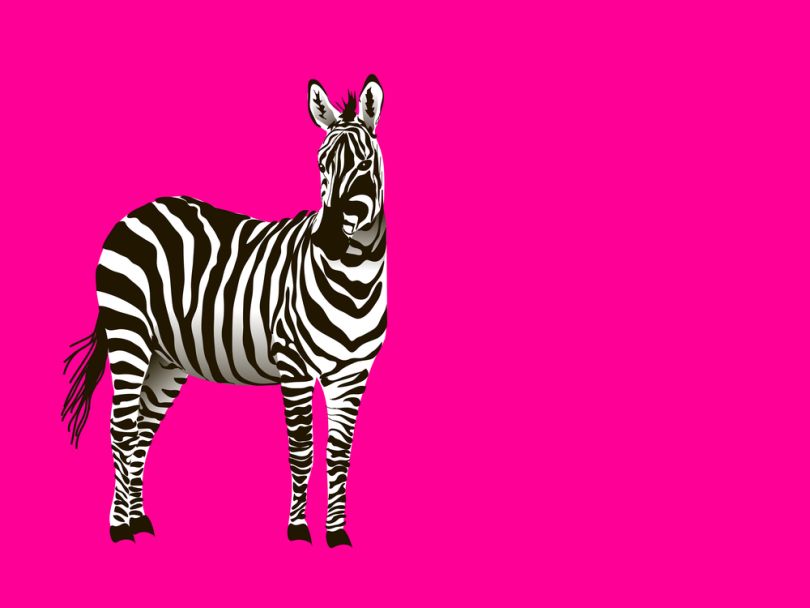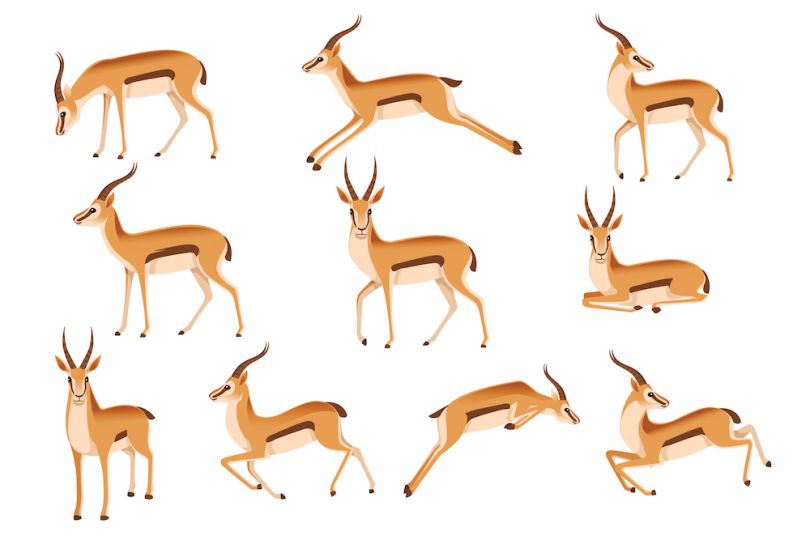This probably sounds quaint, but once upon a time, tech startups were called “startups.” Occasionally, venture capitalists called them “portfolio companies,” or customers called them “tech companies,” but “startup” was the main term.
In 2013, though, startups began their Animorphs journey.
That year Aileen Lee, then a founder and managing partner at Cowboy Ventures, wrote a report on the tiny minority of startups — 0.07 percent, at the time — valued at $1 billion within their first decade.
She considered various terms for these stars, including “home run,” she told Inc., “[b]ut then I put ‘unicorn’ in and it all fit,” she said. “I wanted to convey rarity and alchemy.”
The term stuck. It became synonymous with success in the tech industry — it was the vision every VC and founder set their sights on. Unicorns began cropping up at an accelerating rate. In 2013, the past decade had seen roughly four new unicorns per year. In 2018 alone, 151 new unicorns emerged.
The Bay area, especially, became a unicorn-minting machine. But had the tech industry’s focus on unicorns become a kind of tunnel vision?
“[When] you focus on revenue growth to the exclusion of all other key metrics, you might be building a broken company.”
Yes, said a growing crop of critics. Unicorns are mythical creatures; hunting them, even figuratively, is impractical. It requires a growth-at-all-costs mentality that undervalues, and sometimes downright ignores, unit economics, not to mention all the unquantifiable factors that make businesses thrive.
“[When] you focus on revenue growth to the exclusion of all other key metrics, you might be building a broken company,” Matthew Cowan, general partner at venture firm Next47, told Built In.
Gunning for unicorn status also involves risky, make-or-break expansion tactics that often tank perfectly viable companies.
“Signing up for Silicon Valley’s unicorn-hunting strategy is a bit like mortgaging your home to buy three new homes,” Alexandre Lazarow, a venture capitalist at Cathay Innovation, wrote in his book Out-Innovate.
When the moment is right, it can pay off to take bold risks like that — but they perhaps shouldn’t be standard operating procedure across an entire industry. The moment just isn’t right that often, Astrid Scholz, founder of Sphaera Solutions and co-founder of Zebras Unite, told Built In.
Fewer than 1 percent of venture-backed companies achieve unicorn status, “but you have 100 percent of the venture capital industry focused on cranking out unicorns,” she said. “What’s wrong with running a company from zero to a hundred million dollars?”
Nothing — and there’s nothing wrong with unicorns, either, necessarily. It’s the unicorn-or-bust mentality that bothers Scholz and Lazarow. So they’ve both dreamed up new, more pragmatic playbooks for tech success, named after real animals.

Inside the Startup Menagerie
The modern startup doesn’t have to be a unicorn — it can also be a zebra, a camel, a gazelle and a host of other creatures. Below, we decode the latest in startup lingo.
The Zebra
Zebras fuse profit and purpose, shy away from venture funding and collaborate with each other.
Scholz and a group of other startup founders coined the term “zebra” in 2017, with a Medium post titled “Zebras Fix What Unicorns Break.”
“Zebra companies are both black and white,” the post explained. “[T]hey are profitable and improve society. They won’t sacrifice one for the other.”
That doesn’t mean zebras are nonprofits, or certified B Corporations, focused on sustainability and social justice. (Scholz views the zebra movement as “orthogonal” to the B Corporation movement.) Instead, it means that zebra businesses have roots in their leaders’ personal experience and visions.
Scholz’s Sphaera, a systems engineering firm, “is informed by my lived experience as a former nonprofit exec,” she said. (Before founding Sphaera, she was president of Ecotrust, a nonprofit in the environmental sector.)
Zebra founders’ personal connection to their companies means they strive for capital efficiency, and tend to avoid trading equity for venture funding.
“Part of what makes me a zebra is I don’t actually want to give [an investor] a part of my company.”
“Part of what makes me a zebra is I don’t actually want to give [an investor] a part of my company,” Scholz said.
This skepticism toward outside investment changes a zebra’s core character. Rather than seeking hockey-stick growth and industry dominance, as venture-funded companies often do, zebras build cooperative relationships with other startups.
In fact, the term “zebra” has blossomed into Zebras Unite, an international community of founders and investors with more than 1,200 members, all looking beyond the unicorn framework. This year, Zebras Unite announced plans to become a member-owned co-op and launch an investment fund for “founders of a different stripe.”
Ultimately, being a zebra means adopting a “holistic ethos,” Scholz said. It leads to businesses that “make profits and are also solving ... problems more relevant to society than, you know, Tinder for dogs.”

The Camel
Camels can survive in the “desert” of volatile, cash-strapped markets.
Unlike the zebra, the camel — a term Lazarow coined in his 2020 book Out-Innovate — embraces venture capital and the end goal of unicorn status.
“The VC model still makes sense,” Lazarow said. “I’m a venture capitalist, obviously, so I’m biased.”
The camel takes a different growth path than the classic unicorn, though. Rather than growing as rapidly as possible, often fueling the process with subsidized or free product, the camel follows a different, lower-risk path.
A typical unicorn leadership team might say, “‘Let’s spend a hundred million dollars on marketing; we’ll figure out the unit economics later,’” said Cowan — a camel enthusiast.
Camels, on the other hand, “charge for the value they create from the get-go,” Lazarow wrote. They hammer out unit economics first, then scale, “managing burn and taking a long-term approach.”
This means camels depend less on venture funding than unicorns. While camels still might raise a few, smallish rounds for strategic growth spurts, they never stray too far from profitability, often diversifying their business models to reinforce their foundations.
This gives camels the resilience to survive in emerging markets — “the proverbial desert,” as Lazarow put it — where funding is relatively scarce, economic shocks come often, and a business failure has much more serious consequences than it does in Silicon Valley.

The Gazelle
A gazelle’s revenue grows fast — and, like real gazelles, these companies are often found in Africa.
Originally, a gazelle meant a company that had revenue of at least $1 million, and then doubled its revenue in four years. In other words, each year for at least four years, its revenue grew by 20 percent.
American economist David Birch initially coined the term “gazelle” in his book Job Creation in America: How Our Smallest Companies Put the Most People to Work. He argued that, though only a tiny fraction of American companies qualify as gazelles, they create the vast majority of the country’s new jobs each year.
In the decades since then, though, “gazelle” has been repurposed, and has become a catch-all term for successful tech startups founded in Africa, where Silicon Valley’s unicorn playbook clashes with the material realities.
“We may be able to create more gazelles at home than unicorns abroad.”
Venture investment in Africa is scarce; total investment in startups on the continent first surpassed $1 billion total in 2018, according to Partech Partners. (Meanwhile, in 2018, VCs invested roughly $100 billion in Bay Area startups.) African countries have created a few unicorns despite the scant capital, including Nigerian fintech firm Interswitch, but the unicorn is even rarer in Africa than it is in the United States.
“It might be a better option to set lower revenue expectations and have startups list on local exchanges to raise capital from IPOs when they’re ready,” Senegalese venture capitalist Marième Diop said at a 2019 TechCrunch event. “We may be able to create more gazelles at home than unicorns abroad.”
The exact definition of the term remains contested. In her TechCrunch appearance, Diop said a gazelle might be a company valued at $100 million or more and generating revenues of $15 to $50 million. Other thinkers specify different revenue ranges, or require 20 percent revenue growth each year, drawing on Birch’s definition.

The Others
Other startup-world animal shorthands include the donkey, the mosquito, and the Clydesdale.
The donkey: A unicorn that turned out to be overvalued.
The Clydesdale: Companies with between $1 million and $5 million in annual revenue, according to Kim Folsom, founder and CEO at Founders First Capital Partners. Folsom named these companies after the draft horses — not mythical creatures, but majestic ones. (They’re beloved, randomly, by Budweiser, which owns a team of them.)
The mosquito: The mosquito offers a catchall way of thinking about all startups, first floated by Y Combinator co-founder Paul Graham in 2004. In an essay called “How to Make Wealth,” he wrote:
A startup is like a mosquito. A bear can absorb a hit and a crab is armored against one, but a mosquito is designed for one thing: to score. No energy is wasted on defense. The defense of mosquitos, as a species, is that there are a lot of them, but this is little consolation to the individual mosquito.
Startups, like mosquitos, tend to be an all-or-nothing proposition. And you don’t generally know which of the two you’re going to get till the last minute.

Survival of the Fittest?
So — which of these terms will emerge victorious, replacing the unicorn and trouncing all its competitors?
That’s not exactly the right question, according to Scholz and Lazarow. Just as all of the animals above coexist, the terms can too. Biodiversity is good, and so are diverse visions of success and how to get there.
That’s exactly what Silicon Valley lacked in the 2010s. “The unicorn” became the only way VCs could imagine success, and it came to mean more than “a $1 billion valuation within a decade.”
At this point, it represents an entire “philosophy on growth,” Lazarow said, and “a philosophy on how to build a startup,” synonymous with venture funding, growth hacking and all of Silicon Valley’s default settings.
Each of the animal metaphors above critiques the many facets of “the unicorn” in a different way. Even the mosquito does, inadvertently. Startups “tend to be an all-or-nothing proposition,” Graham writes — but why? Is there another way?
(Yes, answer Lazarow, Cowan and all the other camel proponents. Startups can be resilient desert creatures, rather than defenseless insects.)
This year, especially, the tech industry needs an expanding lexicon of non-mythical animals. Even before the coronavirus ushered in months of unprecedented economic volatility and historic unemployment, venture capitalists foresaw a market correction, and sought unicorns less aggressively.
This was far from unprecedented. “There’s a little bit of a pendulum that swings back and forth in venture,” Cowan said. It oscillates between the two extremes of “growth at any cost” — a.k.a. unicorn hunting — and “underlying profitability” — a.k.a. investments in camel, gazelles and (if they’re taking on investors) zebras.
In other words, this is an old conversation in the venture and business worlds, decked out in whimsical words.
Scholz is all for it. “Yay to the menagerie,” she said. “It’s all a good effort to break up the notion that you’re either a lifestyle company or you’re a unicorn.”
Not only is this false binary condescending to smaller companies, Scholz said — it can also just become farcical, even to venture capitalists like Cowan.
He told a joke that goes like this: A merchant returns from a day at the market, dejected, and confides in his friend.
“It’s been a really rough day,” he says. “I sold 30 melons for four dollars and I bought them for five dollars, so I lost a lot of money.”
“I’ve got a great idea,” his friend says. “Tomorrow, sell more melons.”
“I think it sort of captures the unicorn world,” Cowan said. By comparison, the world of camels, zebras and gazelles looks downright irresistible.




